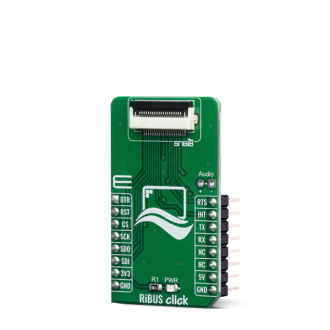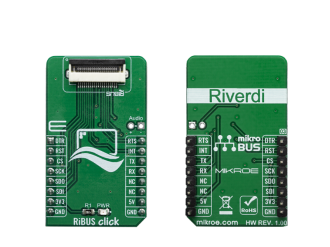
We strongly encourage users to use Package manager for sharing their code on Libstock website, because it boosts your efficiency and leaves the end user with no room for error. [more info]

Rating:
Author: MIKROE
Last Updated: 2022-08-13
Package Version: 1.0.0.0
Example: 1.0.0.0
Category: Adapter
Downloaded: 1031 times
Not followed.
License: MIT license
RiBUS Click is an adapter Click boardâ„¢ that allows a mikroBUS to interface with RiBUS compatible display modules.
Do you want to subscribe in order to receive notifications regarding "RiBUS click" changes.
Do you want to unsubscribe in order to stop receiving notifications regarding "RiBUS click" changes.
Do you want to report abuse regarding "RiBUS click".


Library Description
Examples description
The example demonstrates a counter that changes one label and a digit to 1000.
InitVTFTStack();
while(cnt < 1000)
{
EveNumber1.Value = cnt;
DrawEveNumber(&EveNumber1);
DrawScreen(&Screen1);
cnt++;
Delay_ms(300);
}
Other mikroE Libraries used in the example:
Additional notes and informations
Depending on the development board you are using, you may need USB UART click, USB UART 2 click or RS232 click to connect to your PC, for development systems with no UART to USB interface available on the board. The terminal available in all MikroElektronika compilers, or any other terminal application of your choice, can be used to read the message.